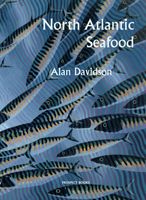Label
All
0
Clear all filters
🔥 Treat yourself (or your dad)! 25% off ckbk Premium Membership with code FATHERSDAY 🔥
Salmon, Atlantic Salmon
Salmo salar Linnaeus
Appears in
Published 1980
Family Salmonidae

- Portuguese: Salmão
- Spanish: Salmón
- French: Saumon
- Dutch: Zalm
- German: Lachs
- Polish: Losós
- Russian: Semga, Losos’
- Finnish: Lohi
- Swedish: Lax
- Norwegian: Laks
- Danish: Laks
- Icelandic: Lax
- Other: Laksur (Faroese); Bradán (Irish); Eog (Welsh); Kapisilik (Greenlandic)
LIFE-CYCLE As Netboy puts it: ‘Every salmon that finds its way to the sea starts life as a pink blob, not much larger than buckshot, buried in the deep gravel of a cold stream.’ The eggs remain buried in the gravel for about eighty to ninety days in Britain (but up to twice as long in colder climates) and then hatch. What emerge are Alevins, less than 1½ cm long, each with a yolk-sac protruding from its belly. When this has been digested, the alevins come out of the gravel, and they are then referred to as Fry. As they gain in size, they become Parr. The parr stage lasts until the fish migrate to sea. In Britain they usually do this in their second year; but further north it is more likely to be in their third year. While they are in the parr stage (and still no bigger than a man’s finger) they develop brown backs with black spots along their sides, and a few red ones; and they have nine to thirteen dark bars, called parr marks, on their sides. See the drawing below.
Part of
Advertisement
Related Recipes
-
-
-
-
Related Reference
-
-
-
-
Advertisement



